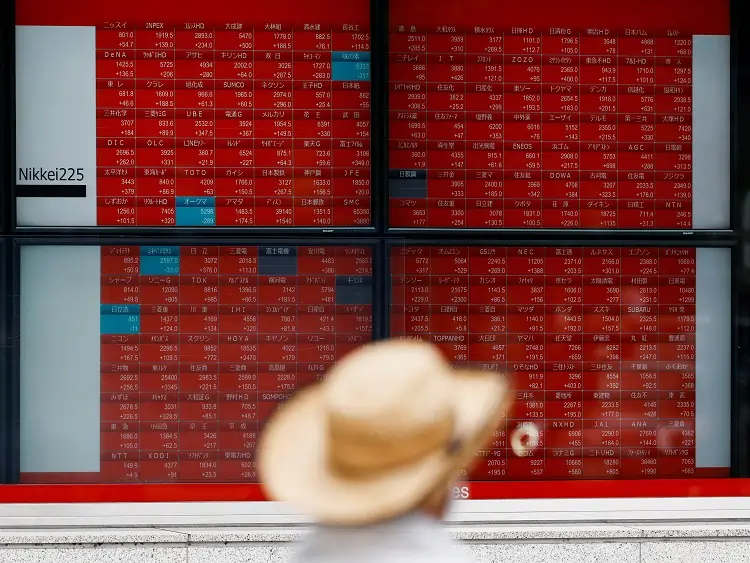
By Stella Qiu
SYDNEY (Reuters) -Asian shares retreated from a 32-month peak on Thursday as the sizzling rally in Hong Kong took a breather, while Japan’s Nikkei jumped as the risk of further tightening in monetary policy this year faded.
Sterling fell 0.7% to a two-week low of $1.3177 after Bank of England Governor Andrew Bailey said the central bank could become a “bit more aggressive” on rate cuts if inflation continued to ease. FTSE futures narrowed earlier losses and were last down 0.1%.
EUROSTOXX 50 futures still fell 0.5%. Nasdaq futures dropped 0.3% and S&P futures slipped 0.2%.
Several Asian markets including South Korea, Taiwan and mainland China are closed for the day. MSCI’s broadest index of Asia-Pacific shares outside Japan fell 1% largely driven by a 1.6% drop in Hong Kong’s Hang Seng index.
That came after its meteoric rise of more than 30% over just three weeks, fuelled by a flurry of Chinese stimulus measures to revive a faltering economy. [.SS]
The Nikkei outperformed with a jump of 2% as Japan’s newly elected Prime Minister Shigeru Ishiba said the country was not ready for additional rate hikes, after meeting with the central bank governor Kazuo Ueda.
Ueda also said the central bank would move cautiously in deciding whether to raise rates.
That was followed on Thursday by dovish BOJ policymaker Asahi Noguchi who said the bank must patiently maintain loose monetary conditions.
The yen skidded 2% overnight before hitting a one-month low of 147.24 per dollar on Thursday.
“Put together, I guess it is a comprehensive boost for the dollar/yen because for me it has taken rate hikes off the table for 2024… More likely we’re talking about next tightening isn’t going to be until 2025,” said Tony Sycamore, analyst at IG.
“I think dollar/yen is going to be driven by the U.S. side of the equation now. Given the fact we saw some good U.S. jobs data this week – if that turns out to be case for non-farm payrolls tomorrow – the dollar/yen can continue to ratchet up higher towards 149.40 which we saw in mid-August.”
Futures imply less than a 50% chance that the BOJ could hike by 10 basis points by December, while rates are only seen climbing to 0.5% by the end of next year, from the current 0.25%.
Overnight, Wall Street was mostly flat, though Treasury yields rose after a strong private payrolls report added to evidence of a healthy U.S labour market, lessening the risk of a big downside miss for Friday’s non-farm payrolls data.
Bonds this week have been supported by safe-haven flows as geopolitical tensions in the Middle East ratcheted up. Israel said eight of its soldiers were killed in combat in south Lebanon as its forces thrust into its northern neighbour in a campaign against the Hezbollah armed group.
Two-year Treasury yields were little changed at 3.652%, while ten year yields were flat at 3.792%.
Markets imply a 36% chance the Fed will cut by another 50 basis points in November, compared with almost 60% last week, and have 70 basis points of easing priced in by year-end.
In the foreign exchange markets, the euro sagged at $1.1040, just above key support at $1.10 and not far from Wednesday’s low of $1.10325, a level last seen on Sept. 12.
Markets ramped up bets that the European Central Bank will cut rates at each of its meetings in October and December after a top policy hawk Isabel Schnabel sounded more sanguine about inflation coming under control.
Oil prices rose on worries the escalating Middle East conflict could threaten oil supplies from the world’s top producing region. Brent futures rose 1.2% to $74.82 a barrel. [O/R]
Gold hovered near a record high at $2,652.75 an ounce.
(Reporting by Stella QiuEditing by Shri Navaratnam and Sam Holmes)


